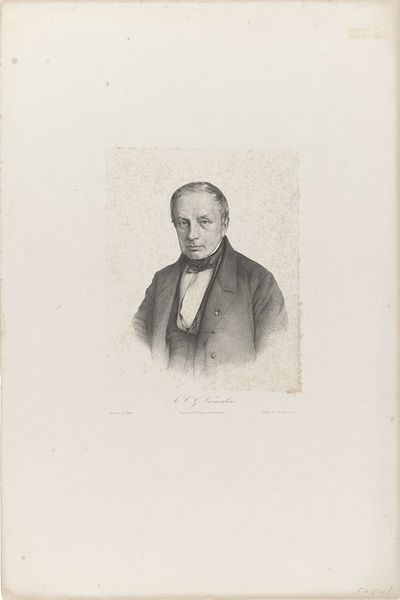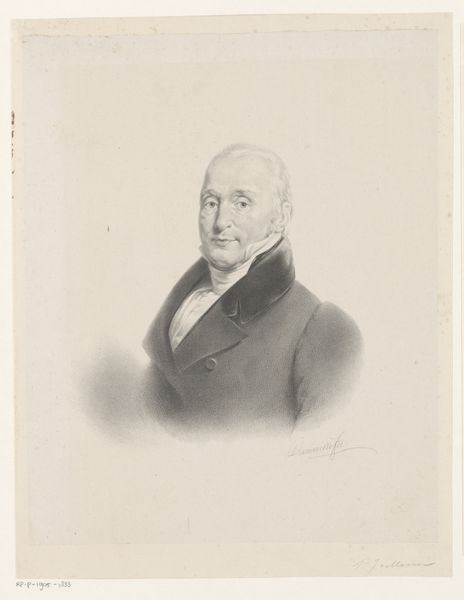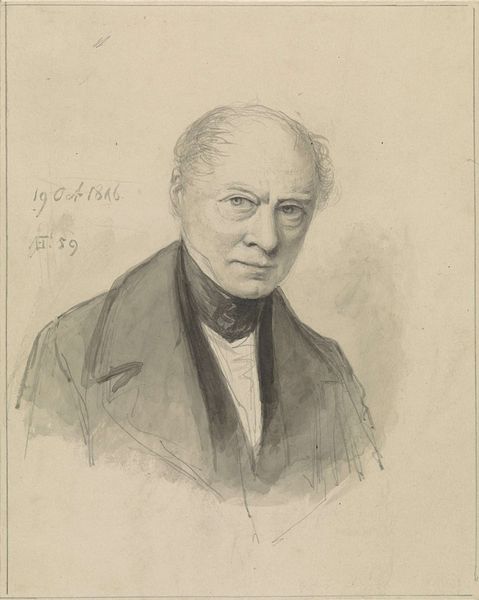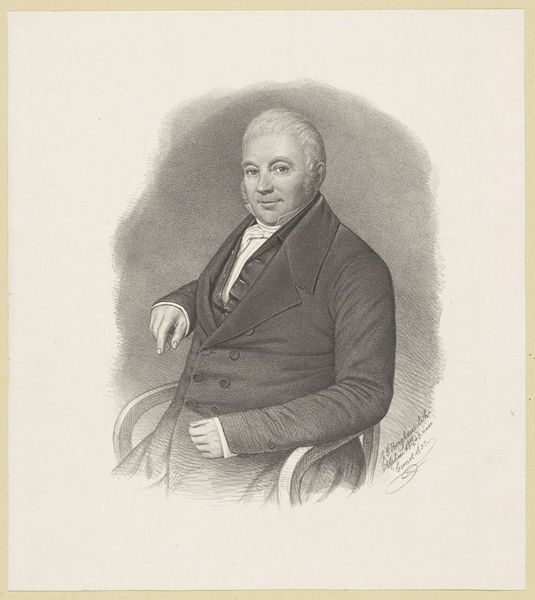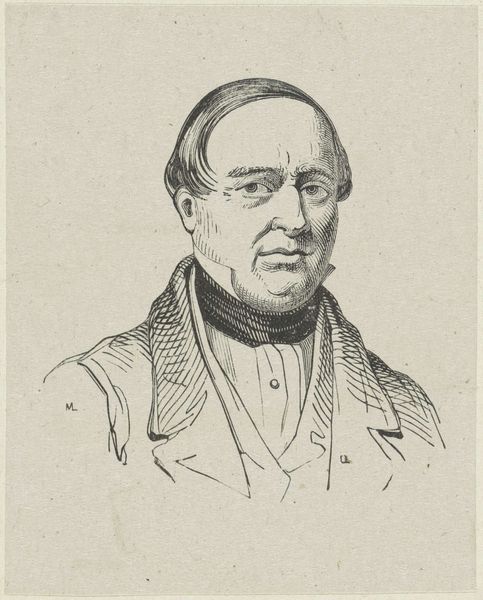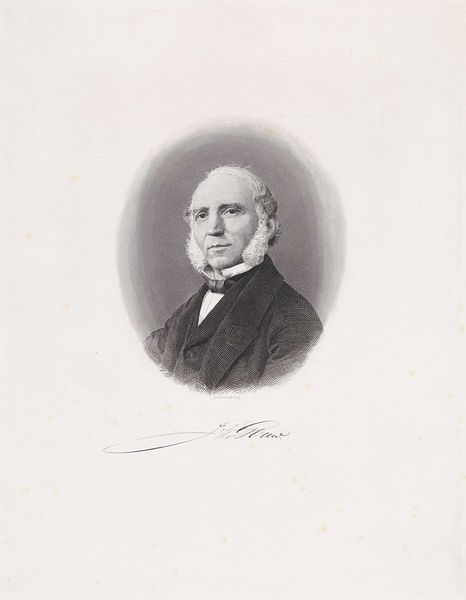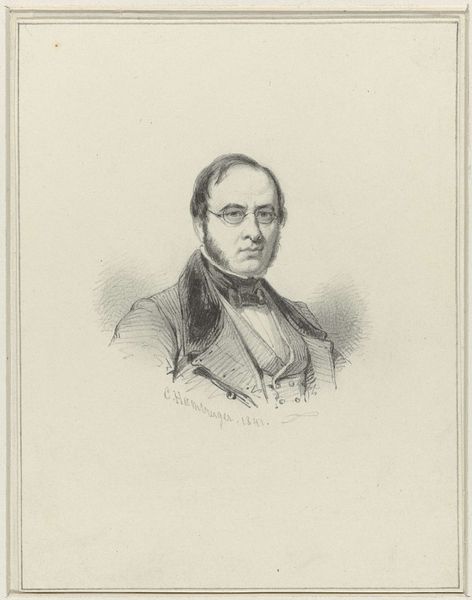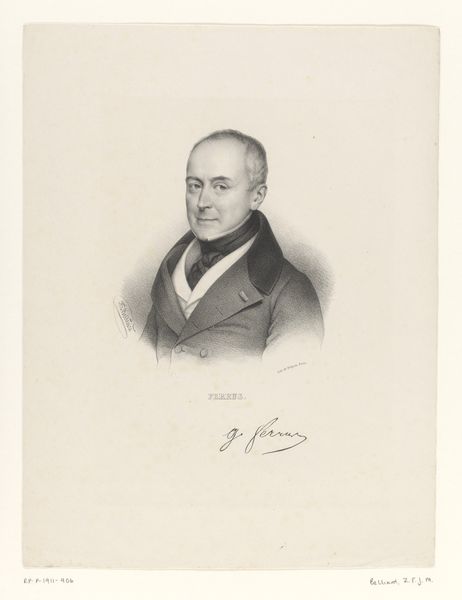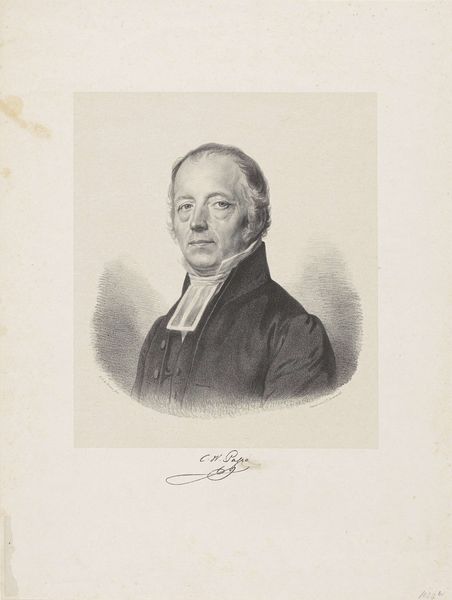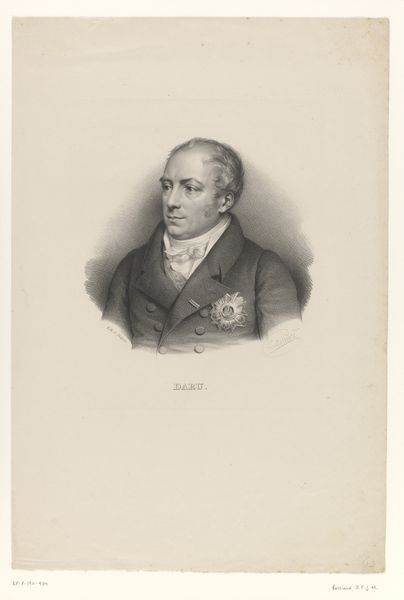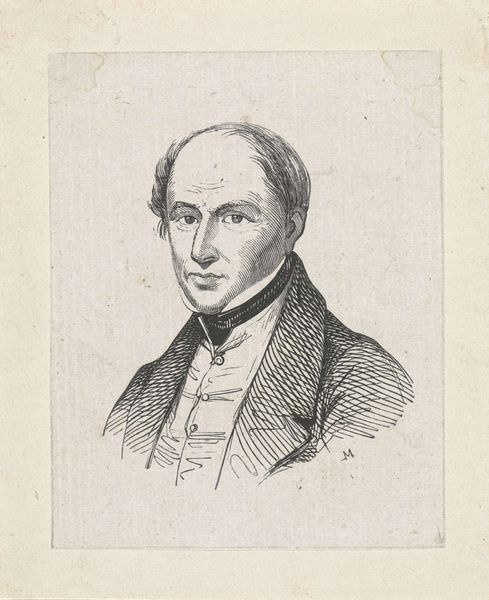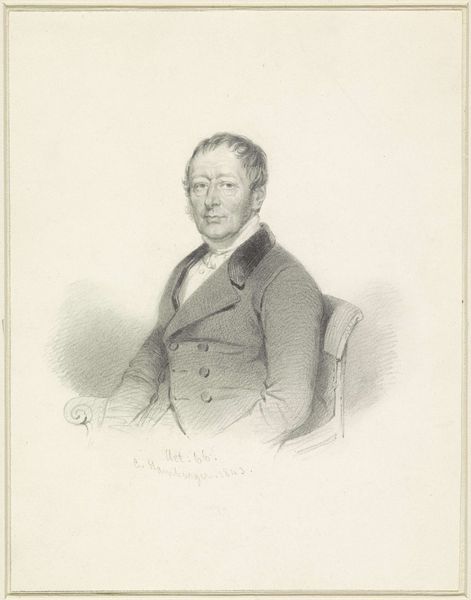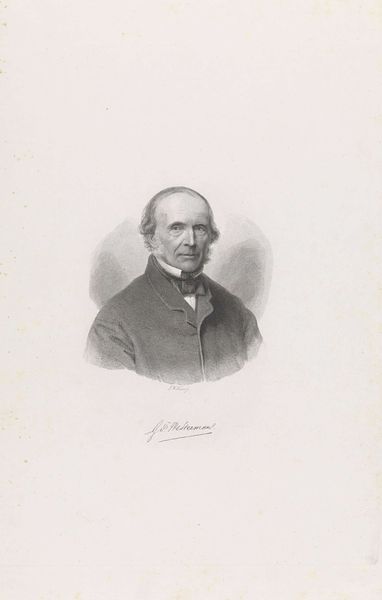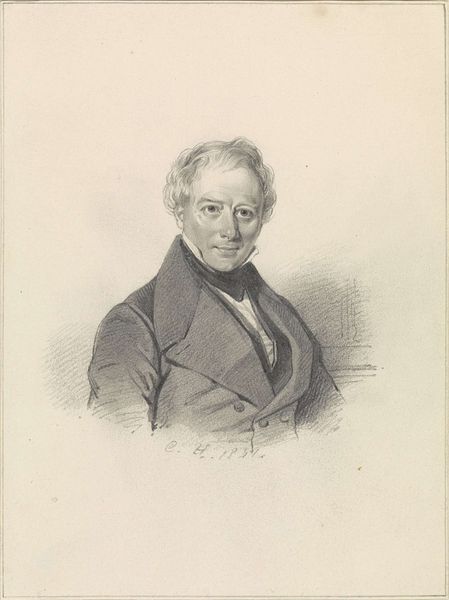
drawing, pencil
#
portrait
#
pencil drawn
#
drawing
#
pencil drawing
#
pencil
#
academic-art
#
realism
Dimensions: height 138 mm, width 113 mm
Copyright: Rijks Museum: Open Domain
Editor: Here we have Coenraad Hamburger’s “Portret van Albertus Brondgeest,” a pencil drawing from 1841. It has such a stoic feel. I wonder, how do you interpret this work within the artistic landscape of its time? Curator: The realism on display is indeed striking. We see here the rise of the bourgeois subject. Portraiture, once the domain of the aristocracy and high clergy, expanded its purview in the 19th century to include merchants, scholars, and professionals. What strikes you about the visual choices made here? Editor: The detail is incredible for a pencil drawing. The shading really gives dimension to his face. Curator: Indeed. The piece presents itself as an objective rendering, but of course, is imbued with artistic decisions. Consider the context in which a portrait like this would be displayed or commissioned. Who was this man, Albertus Brondgeest? Was this portrait meant for public display or private contemplation? It signals a shift toward a broader segment of society claiming a space within the visual narrative. The pencil drawing suggests intimacy. It also speaks to changes in print culture, given this portrait could be relatively easily reproduced compared to an oil painting, therefore impacting the broader visual economy. Editor: So it’s both an individual representation and a reflection of larger social shifts in power? Curator: Precisely! And consider the role that institutions such as art academies played in codifying what constituted "good" portraiture during this period, setting a standard against which such works were both produced and judged. The “academic art” style designation reminds us of that system of power. Editor: That gives me a lot to think about regarding the social context of this type of art. Curator: Exactly, art is never made in a vacuum. By understanding these social and historical currents, we get a fuller sense of its significance.
Comments
No comments
Be the first to comment and join the conversation on the ultimate creative platform.
